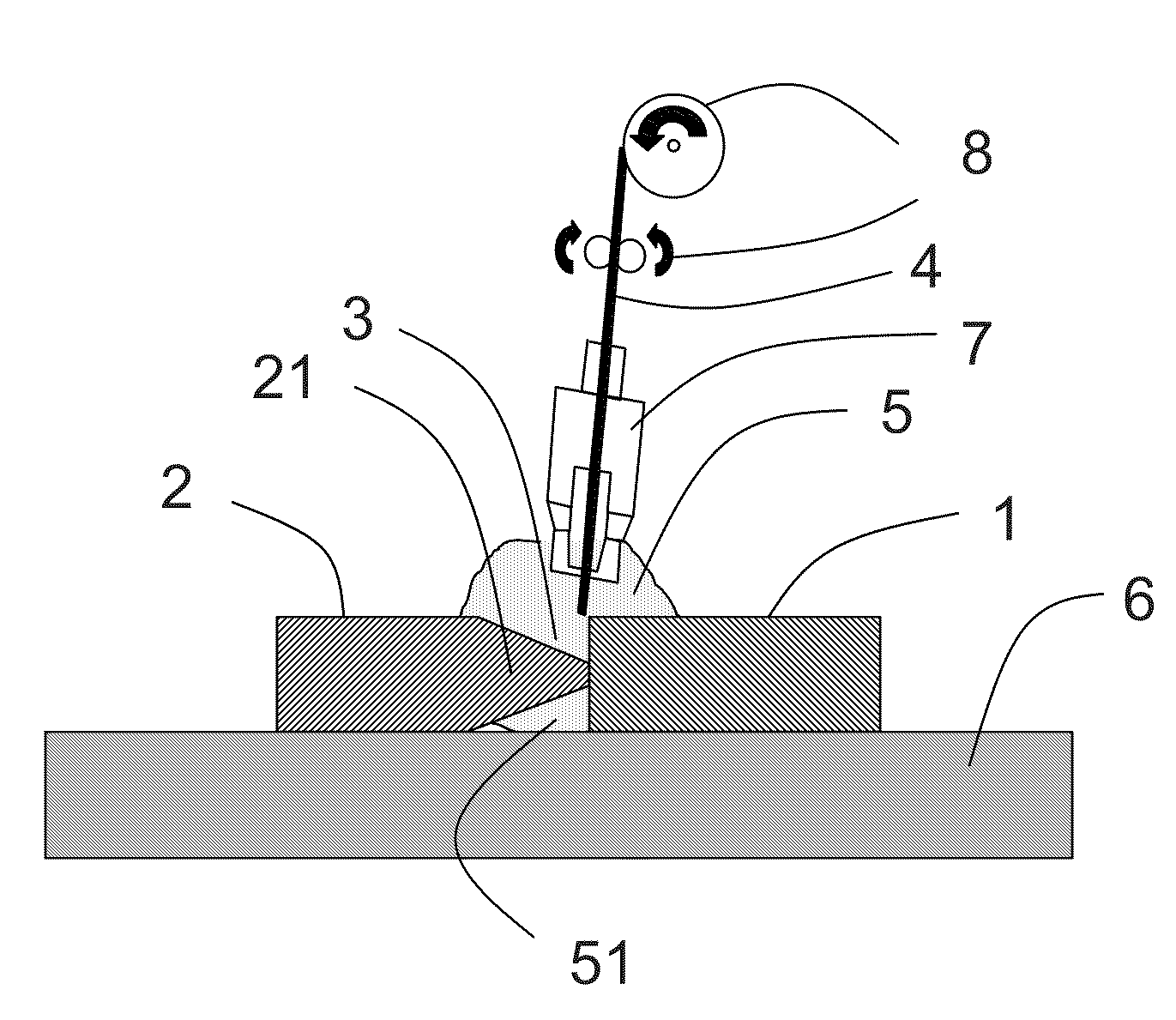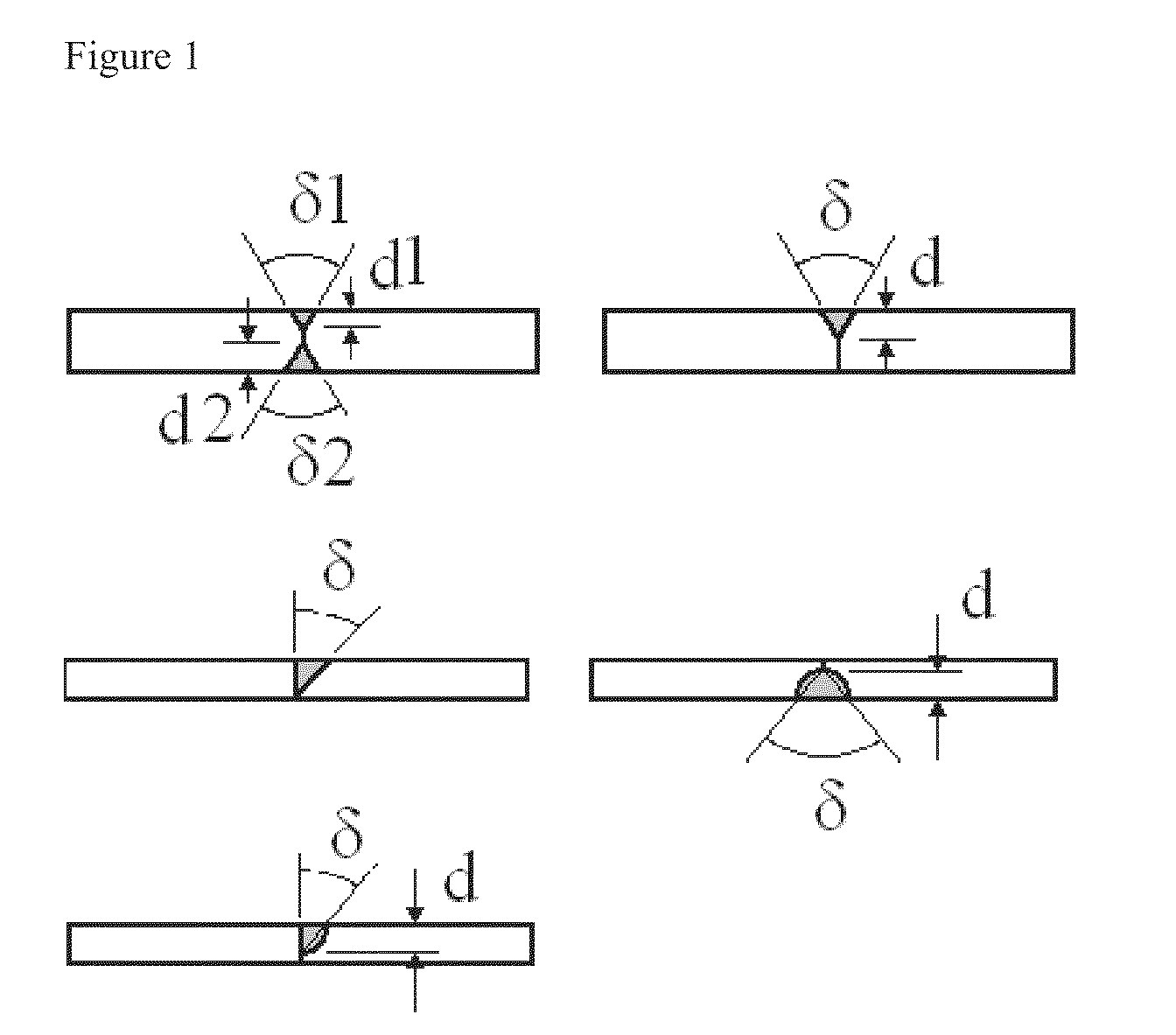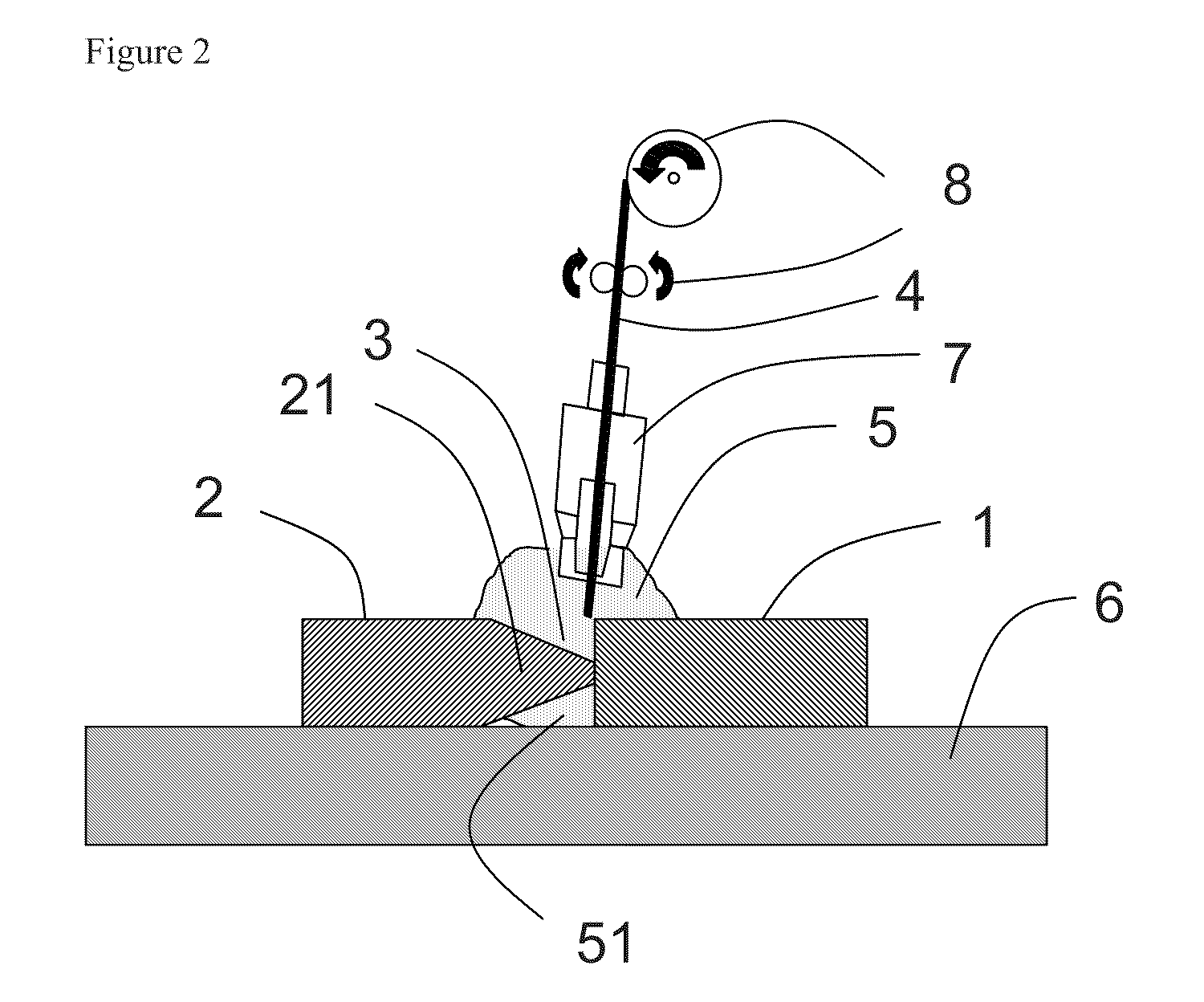Fusion Welding Process To Join Aluminium and Titanium
a technology of titanium alloys and alloys, applied in the direction of magnetic bodies, furniture parts, seating arrangements, etc., can solve the problems of unsatisfactory compromises, titanium alloys are more expensive, and aluminum alloys have a higher density than aluminum alloys
- Summary
- Abstract
- Description
- Claims
- Application Information
AI Technical Summary
Benefits of technology
Problems solved by technology
Method used
Image
Examples
examples
[0057]Welded assemblies were prepared comprising 1.8 or 2 mm thick sheets made of an aluminum alloy and of a titanium alloy having the same thickness. The titanium alloy was Ti-6Al-4V. The aluminum alloy was either AA6X56 or AA2X98. AA6X56 was welded either in the T3X temper or in the T6X temper. When AA6X56 was welded in the T3X temper, the welded assembly was aged in order to obtain a T6X temper after welding. AA2X98 was welded either in the T3X temper or in the T8X temper. When AA2X98 was aged in the T3X temper, the welded assembly was aged in order to obtain a T8X temper after welding This process is referred to as PWHT (Post Welding Heat Treatment) whereas process wherein welding is carried out on an aged aluminum alloy member are referred to as HTBW (Heat treatment Before Welding).
[0058]MIG arc welding was used as a welding method. The trials were conducted with a CMT® welding machine from Fronius. Argon was used as an inert gas for welding. The filler metal was a 4043 alloy w...
PUM
| Property | Measurement | Unit |
|---|---|---|
| ultimate tensile strength | aaaaa | aaaaa |
| mechanical strength | aaaaa | aaaaa |
| thickness | aaaaa | aaaaa |
Abstract
Description
Claims
Application Information
 Login to View More
Login to View More - R&D
- Intellectual Property
- Life Sciences
- Materials
- Tech Scout
- Unparalleled Data Quality
- Higher Quality Content
- 60% Fewer Hallucinations
Browse by: Latest US Patents, China's latest patents, Technical Efficacy Thesaurus, Application Domain, Technology Topic, Popular Technical Reports.
© 2025 PatSnap. All rights reserved.Legal|Privacy policy|Modern Slavery Act Transparency Statement|Sitemap|About US| Contact US: help@patsnap.com



